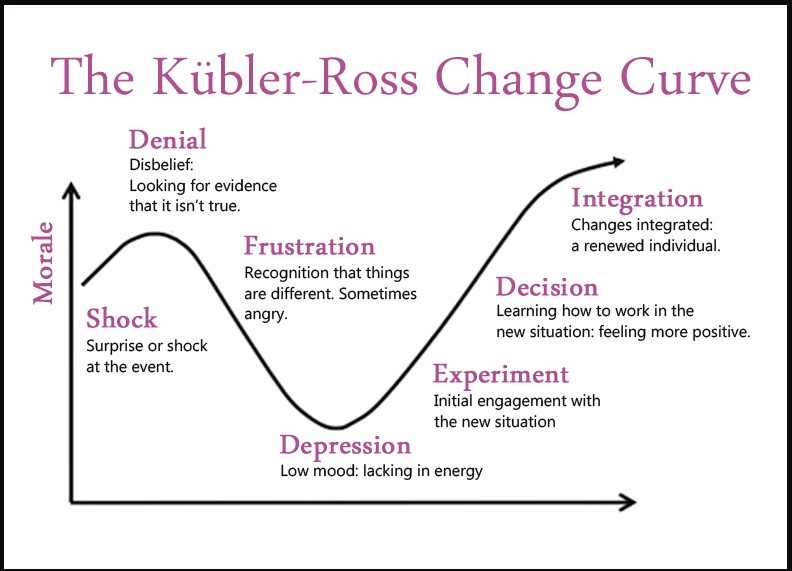
Whilst change is inevitable the way we approach and cope with change is something we have some control over. There are several ways we can navigate change such as by ‘going with the flow’, fighting the change, or by changing the way we think about change which can include:
The change curve is a popular and powerful model used to understand the stages most people go through as they adjust to change. It can help predict and understand how people may react to change, help navigate their response to change, and point to stages where they may need guidance and support.
People will move through this curve at different rates and possibly stay at different stages for longer than others. By understanding the change curve, you can work and plan on how to minimise some of the negative impacts of the change, and yourself and others to adapt more quickly to it. The aim is to make the curve shallower and narrower. Stages need to be acknowledged and not unduly “rushed through” but if you can support yourself to move into the learning stages it will make the change process easier.

Supportive people can help you manage stress in times of change:
Resilience is about bouncing back from change – but also about performing during times of stress and pressure:

Moral injury in the workplace can negatively impact our psychological wellbeing and mental health. Here’s why it matters.
Read more
When choosing how to cultivate wellness in the workplace, it’s never been more important to take an organisation-wide approach. Here’s why.
Read more
Imposter Syndrome has become a widely talked about phenomenon – as more people come to recognise this way of thinking. Here’s what we know about how to overcome those imposter feelings.
Read more
Australian workplaces are waking up to the impact of family violence. Caraniche at Work has developed a free report for HR Managers who want to take the lead.